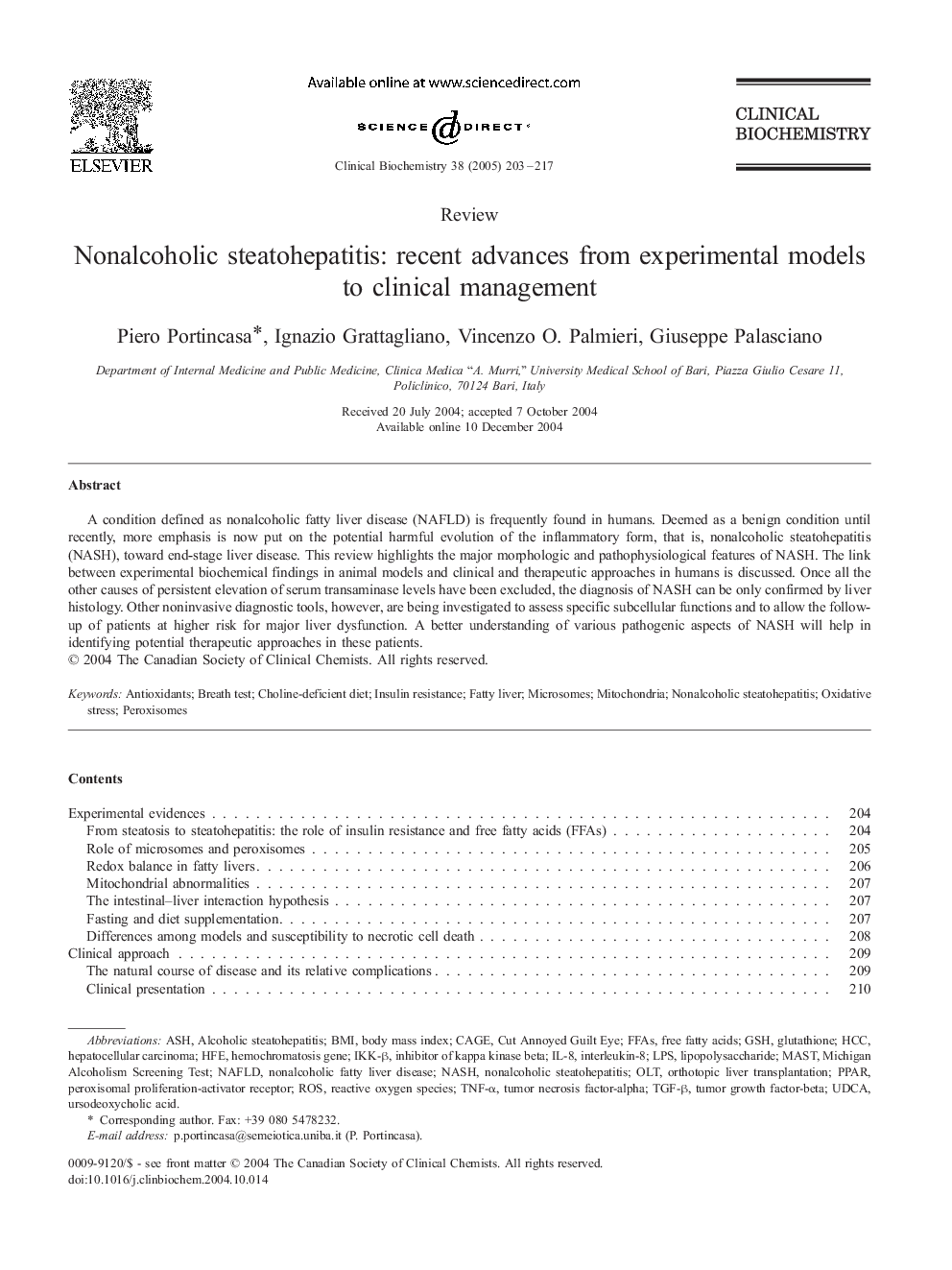| Article ID | Journal | Published Year | Pages | File Type |
|---|---|---|---|---|
| 10818247 | Clinical Biochemistry | 2005 | 15 Pages |
Abstract
A condition defined as nonalcoholic fatty liver disease (NAFLD) is frequently found in humans. Deemed as a benign condition until recently, more emphasis is now put on the potential harmful evolution of the inflammatory form, that is, nonalcoholic steatohepatitis (NASH), toward end-stage liver disease. This review highlights the major morphologic and pathophysiological features of NASH. The link between experimental biochemical findings in animal models and clinical and therapeutic approaches in humans is discussed. Once all the other causes of persistent elevation of serum transaminase levels have been excluded, the diagnosis of NASH can be only confirmed by liver histology. Other noninvasive diagnostic tools, however, are being investigated to assess specific subcellular functions and to allow the follow-up of patients at higher risk for major liver dysfunction. A better understanding of various pathogenic aspects of NASH will help in identifying potential therapeutic approaches in these patients.
Keywords
PPARNAFLDTGF-βIL-8IKK-βhemochromatosis geneGSHUDCALPSHFEOLTFFAsHCCROSBreath testAntioxidantsalcoholic steatohepatitisnonalcoholic steatohepatitisFree fatty acidsUrsodeoxycholic acidInterleukin-8Nonalcoholic fatty liver diseaseMichigan Alcoholism Screening TestOxidative stresstumor necrosis factor-alphaAshcholine-deficient dietbody mass indexBMITNF-αcagelipopolysaccharidemastInsulin resistanceMitochondriaMicrosomesNash Peroxisomesorthotopic liver transplantationHepatocellular carcinomaFatty liverGlutathioneReactive oxygen species
Related Topics
Life Sciences
Biochemistry, Genetics and Molecular Biology
Biochemistry
Authors
Piero Portincasa, Ignazio Grattagliano, Vincenzo O. Palmieri, Giuseppe Palasciano,
